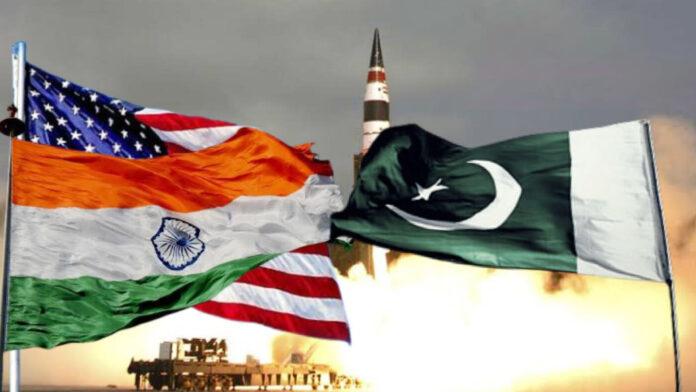
By: Fatima Saleem
The region comprising East Asia, South Asia, the Western Pacific, and the Indian Ocean hosts more than half of the world’s population, nearly two-thirds of the world’s economy, and seven of the world’s largest militaries. Seeing the region as the epicenter of global geopolitics, the US launched its Indo-Pacific Strategy (IPS) in February 2022, intending to “firmly anchor” the region. Rekindling the spirit of previous administrations, the strategy is premised on the principles of:
- Advance a free and open Indo-Pacific
- Build connections within and beyond the region
- Drive regional prosperity
- Bolster Indo-Pacific security
- Build regional resilience to transnational threats
The rebranding of the region from Asia-Pacific (APAC) to Indo-Pacific shows that it remains central to Washington’s foreign policy and is part of a larger geo-political construct. The new framework aims to form a consortium of like-minded countries to promote a US-led rule-based order by merging the theatres in East Asia, South Asia, the Indian Ocean, and the Western Pacific. The strategy emphasizes successfully “defending the US’ interests” through the “containment” of China via militarization of the region, the transfer of critical technologies, and forging alliances and regional partnerships. In its action plan, it discusses the Indo-Pacific Economic Framework for Prosperity (IPEF) as a counterweight to the Belt and Road Initiative (BRI), strengthening ASEAN, supporting India’s rise, delivering on the Quad, and expanding US-Japan-Korea cooperation while promoting good governance and accountability in the region. Through arrangements like Quad and AUKUS; the US is widening its footprint in the region, promoting the arms race, undermining non-proliferation, and altering the strategic balance of the Indo-Pacific, solely to keep the Asian giant under check.
In its diplomatic and academic discourse, China has deliberately avoided the use of the Indo-Pacific and instead uses the Asia-Pacific to describe the region. Chinese have termed the IPS a ‘fantasy targeting China’. Even though Beijing still hasn’t produced a documented response to the IPS, it is well aware of its being an anti-China bloc, resulting in an increased polarization of the region.
India appears several times in the IPS and is referred to as “strong India,” “India as a net security provider,” “India is a like-minded partner,” and “Leading India in South Asia.” Its key role in the region has paved the way for its military ascendancy, increased diplomatic outreach, and growing economic clout. This has taught Indians an exaggerated sense of superiority, which can be seen in their aggressive posturing towards other states.
The Japanese have labeled the region a “confluence of the two seas.”. Japan’s strategy for the region is known as “Free and Open Indo-Pacific” (FOIP), under which it is pursuing an array of policies, out of which, it views Washington as its “security guarantor.”
Following a policy of integrated deterrence, by the early 2030s, Australia will be provided with three Virginia-class submarines, thus showing that the US holds a central position in Australia’s defense capabilities and force structure.
As ASEAN nations find themselves caught amid great power politics, it is becoming increasingly difficult for them to remain neutral. To ensure centrality, and independence and reap maximum benefits from BRI and IPEF, the economic bloc launched its ASEAN outlook on the Indo-Pacific (AOIP) to promote regional integration and meaningful cooperation with partners.
| 2020 | 2021 | 2022 | |
| ASEAN-US | US $362.2 billion | US$ 441.7 billion | US$ 520.3 billion |
| ASEAN-China | $685.28 billion | US$ 878.2 billion | US $975.3 billion |
The table shows that China has not only become ASEAN’s largest trading partner but also a significant contributor to its GDP growth, therefore, there will be a varying degree of commitment by ASEAN nations to the IPS as many of these states are within Beijing’s economic grasp. This will ultimately impact its long-term viability. Foreseeing this, the US and its allies, are working towards building alliances with ASEAN nations, and under this, Japan has been enhancing its defense ties with Thailand, the Philippines, Vietnam, and Indonesia.
One can therefore say that considering the varying national interests of each state, the strategy is perceived differently by all key players, and this will impact the future of the IOR. Under the current circumstances, the following can be predicted:
| Probability | Rationale | |||
| Low | Medium | High | ||
| Polarization of Indo-Pacific | x | x | ✓ | China and the US are vying for influence through alliances and partnerships. Indo-Pacific will therefore be divided into two blocs; led by China and the US |
| Nuclearization of the region | x | ✓ | x | Through arrangements like AUKUS, vertical and horizontal nuclear proliferation in the region might occur |
| De-dollarization | x | x | ✓ | In May 2023, the Association of Southeast Asian Nations (ASEAN), in its 42nd Summit, decided to promote trade in regional currencies. These moves depict an attempt by APAC to decrease their reliance on the US dollar |
| AUKUS+ | x | ✓ | x | To enhance the defense capabilities of its allies, Japan, South Korea, and India might join |
| QUAD+ | x | ✓ | x | To enhance diplomatic outreach, South Korea and Vietnam might be included |
| US-China war | ✓ | x | x | Due to deep economic linkages, there might not be an all-out war between both countries; however, increased incidents of cyber-attacks and proxy warfare should be expected |
The Indian Ocean Region (IOR) has become the epicenter of strategic competition and is being increasingly weaponized, with states competing to achieve regional dominance, access to resources, and control over maritime routes. This has significantly altered the strategic balance of the region and led to the emergence of new frameworks within an emerging multipolar system. There is also an enhanced trend of regional groupings, which has led to increased securitization of the IOR, with several countries introducing their own version of IPS.
Australia’s Indo-Pacific policies are a result of its defense and foreign policy white papers, which aim to enhance its defense capabilities. ASEAN’s outlook on the Indo-Pacific was published in 2019, and states have collectively adopted a carefully calibrated regional approach to ensure neutrality and put ASEAN’s interests first. India’s Maritime Security Strategy of 2015, its Act East policy, and its National Security Strategy of 2019 reflect its stance in the IOR, centered primarily on the containment of China.
The IOR lies in the east of Pakistan, and as of now, the country has limited stakes in the region. However, its geographical position has made it impossible for it to remain insulated from the effects of unfolding great power rivalries.
The US-India Joint Statement of June 2023 reaffirms that Washington will continue to give preferential treatment to India in the information, political, and economic domains. This will ultimately unhinge stability in the South Asian region. As political volatility and economic vulnerability continue to plague Pakistan, the security situation along CPEC routes will likely deteriorate. Under such circumstances, it is high time Pakistan comes out of Cold War thinking and views regional and global strategic realignments with an open mind so that it is better equipped to deal with the storm brewing in the Asia-Pacific.

